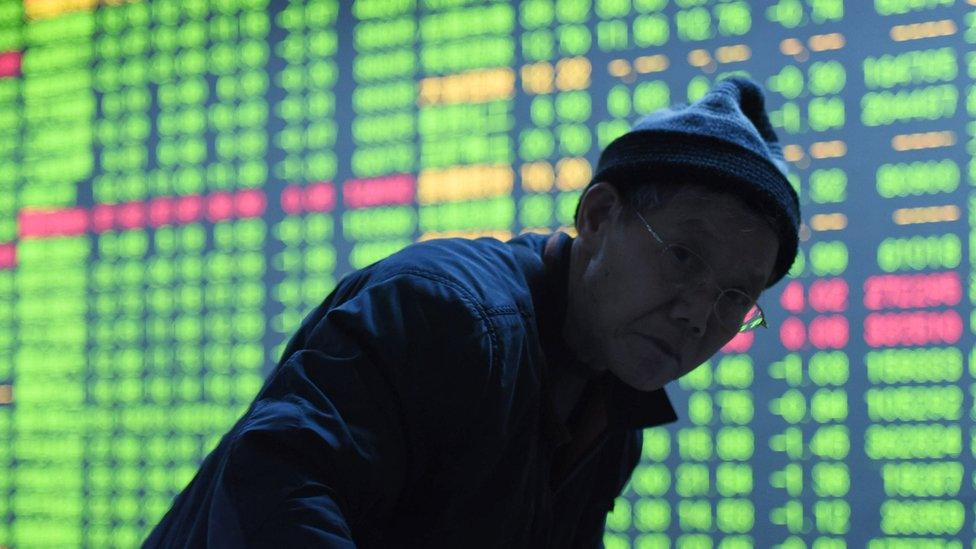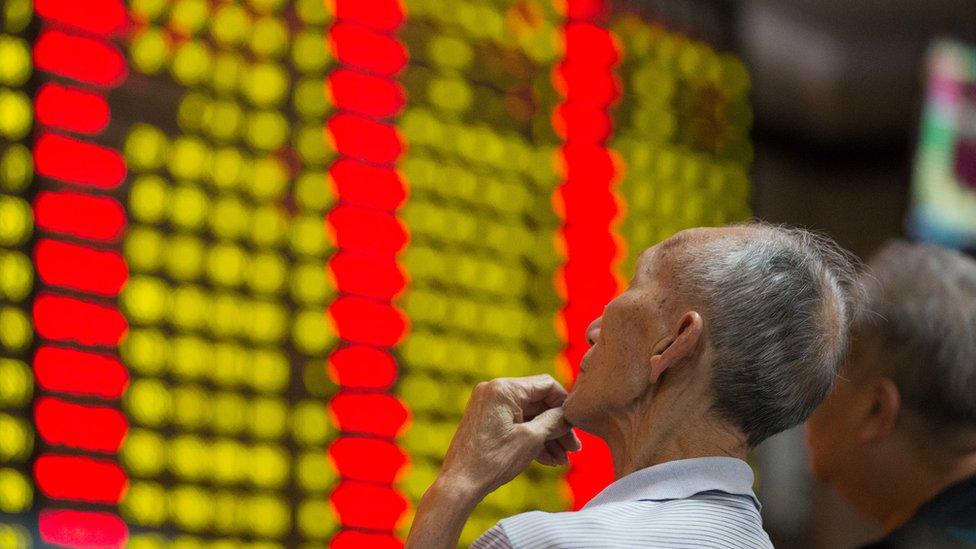China's currency move upsets markets
- Published
- comments

Twenty-nine minutes.
That's all it took for mayhem to break loose on the Chinese stock markets.
It was the shortest trading day on record, according to the Financial Times.
All because of the panic and pessimism I wrote about when this last happened on Monday.
But this time the culprit is very much the Chinese currency, the yuan. The People's Bank of China again surprised markets by settling the official midpoint rate on the yuan at 6.5646 against the US dollar - that's the lowest rate since March 2011.
Why are they doing this? Well there are a few theories, but no real answers. That's because the Chinese, as one analyst put it to me, are infamous for being pretty much the only government in power to stay silent during a crisis.
You would have had to be hiding under a massive rock not to realise the Chinese economy is in trouble - all the indicators have been pointing to that for the last few years.
In the last few months, though it's got progressively worse. And then on Wednesday services data - which was meant to be the saving grace of the Chinese economy - disappointed investors, coming in at a 17-month low.
'Perfect storm'
So now officials are left with a conundrum - slowing exports because of a weaker manufacturing base, and services disappointing too.
Weakening their currency may be one way out, but that's got everyone in the neighbourhood worried. If China's currency weakens, that puts pressure on other Asian countries to lower theirs too.
All of this is happening at the same time that US interest rates are on the rise - a perfect storm perhaps that could send economies in Asia on a disastrous path.
What does this tell us though about our dependence on China's economy, which has powered growth around the region and the world for the last decade?
Well, most tellingly it shows that the once so-called Chinese masters of the universe may not know what's really going on and, worse still, how best to control their own financial markets.
- Published4 January 2016
- Published7 January 2016
